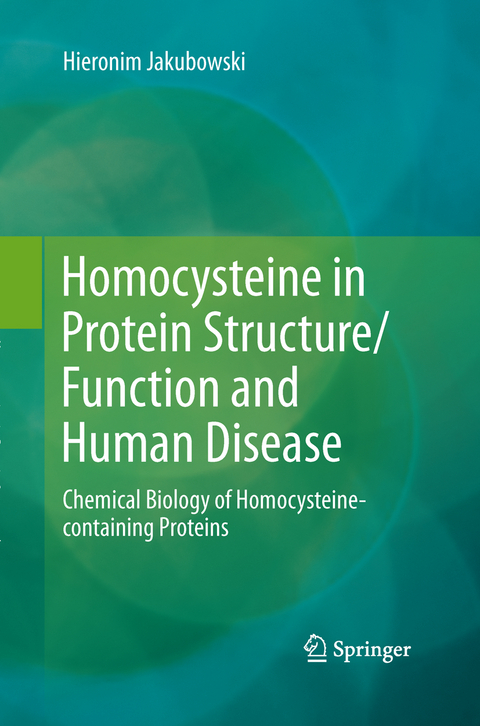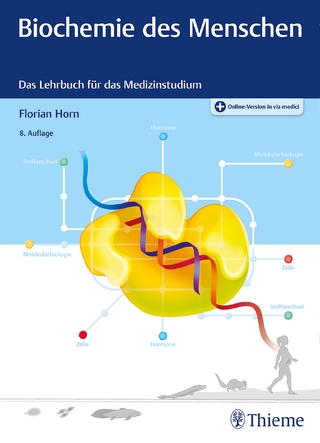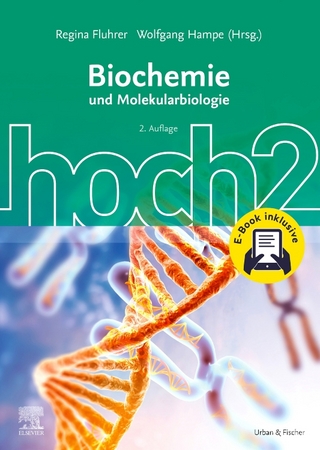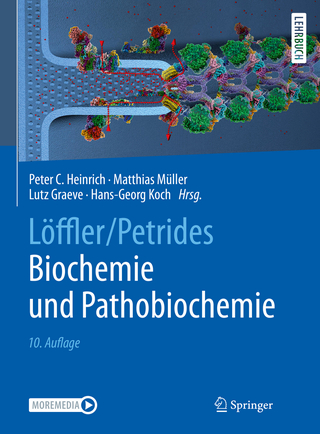
Homocysteine in Protein Structure/Function and Human Disease
Springer Wien (Verlag)
978-3-7091-1720-0 (ISBN)
Excess of homocysteine, a product of the metabolism of the essential amino acid methionine, is associated with poor health, is linked to heart and brain diseases in general human populations, and accelerates mortality in heart disease patients. Neurological and cardiovascular abnormalities occur in patients with severe genetic hyperhomocysteinemia and lead to premature death due to vascular complications. Although it is considered a non-protein amino acid, studies over the past dozen years have discovered mechanisms by which homocysteine becomes a component of proteins. Homocysteine-containing proteins lose their normal biological function and become auto-immunogenic and pro-thrombotic. In this book, the author, a pioneer and a leading contributor to the field, describes up-to date studies of the biological chemistry of homocysteine-containing proteins, as well as pathological consequences and clinical implications of their formation. This is a comprehensive account of the broad rangeof basic science and medical implications of homocysteine-containing proteins for health and disease.
1. Introduction.- 2. Homocysteine. Chemical Synthesis.- Physicochemical Properties.- Quantification Methods.- Metabolic Pathways.- Clinical significance.- 3. Homocysteine Thiolactone.- Chemical Synthesis.- Physicochemical Properties.- Quantification Methods.- Biological Formation and Turnover.- Clinical Significance.- 4. N-Homocysteinylated Proteins.- Functional Consequences.- Albumin.- Fibrinogen.- Cytochrome c.- Other Proteins.- Quantification Methods.- Total N-homocysteinylation assays.- Site-specific N-homocysteinylation assays.- Formation in vivo.- Turnover to N -Homocysteinyl-lysine.- Biological Consequences and Clinical Significance.- 5. S-Homocysteinylated Proteins.- Formation in vitro.- Functional Consequences.- Annexin.- Metallothionein.- Fibrilin, Fibronectin, Tropoelastin.- Detection in vivo.- Biological consequences.- Conclusions.- References.
| Erscheint lt. Verlag | 15.7.2015 |
|---|---|
| Zusatzinfo | XIII, 166 p. |
| Verlagsort | Vienna |
| Sprache | englisch |
| Maße | 155 x 235 mm |
| Themenwelt | Medizin / Pharmazie ► Medizinische Fachgebiete |
| Medizin / Pharmazie ► Pharmazie | |
| Studium ► 1. Studienabschnitt (Vorklinik) ► Biochemie / Molekularbiologie | |
| Naturwissenschaften ► Biologie ► Biochemie | |
| Naturwissenschaften ► Biologie ► Mikrobiologie / Immunologie | |
| Schlagworte | Biochemistry, general • Biomedical and Life Sciences • genetic hyperhomocysteinemia • Homocysteine • medical biochemistry • Metabolic disease • metabolic diseases • methionine metabolism • Protein Science • Protein Structure |
| ISBN-10 | 3-7091-1720-8 / 3709117208 |
| ISBN-13 | 978-3-7091-1720-0 / 9783709117200 |
| Zustand | Neuware |
| Informationen gemäß Produktsicherheitsverordnung (GPSR) | |
| Haben Sie eine Frage zum Produkt? |
aus dem Bereich


